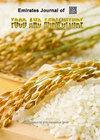甜味剂食品添加剂:关于甜味剂化学性质、在食品中的应用和副作用的综述
IF 0.7
4区 农林科学
Q3 AGRONOMY
引用次数: 0
摘要
肥胖症及其代谢并发症的增加导致了无糖产品消费量的增长,蔗糖被低热量甜味剂所取代。自从发现糖精的合成以来,越来越多的非营养型甜味剂被生产和消费,因为它们不释放能量或只释放极少量的能量。在这种情况下,传统的合成食品甜味剂被大量使用,因为它们比大多数天然甜味剂具有更高的甜味能力。然而,由于其潜在的风险,其中一些甜味剂正被从天然来源获得的高甜味剂所取代,如胭脂虫素和新橙皮甙 DC,或被甜味剂能力更强的合成甜味剂所取代,其中以奥斯甜(advantame)的甜味剂能力最强。然而,据报道,合成甜味剂有许多副作用(即胃和肝问题、过敏反应、恶心、呕吐、行为改变、认知问题、遗传毒性和致癌作用),而天然甜味剂的相关健康问题似乎较少。此外,一些天然甜味剂(如多元醇)的甜味力较低,因此效果较差,但在食品加工中具有其他功能。为了进一步了解使用合成和天然食品甜味剂的影响,本综述旨在提供一种综合方法,介绍目前允许在食品加工过程中使用的甜味剂的化学特性、属性、用途和副作用,其中主要考虑了欧盟授权使用的甜味剂。 关键词甜味剂的副作用;甜味剂食品添加剂;天然甜味剂;合成甜味剂;甜味剂的应用本文章由计算机程序翻译,如有差异,请以英文原文为准。
Sweetener Food Additives: A Synoptical Overview on Their Chemical Properties, Applications in Food Products and Side Effects
The increase of obesity and its metabolic comorbidities have led to a growing consumption of sugar-free products, where sucrose is replaced by low-calorie sweeteners. Since the discovery of the synthesis of saccharin, progressively more non-nutritive sweeteners have been produced and consumed, as they release none or only very small amounts of energy. In this context, traditional synthetic food sweeteners are largely used, because they have a higher sweetener power than most of the sweeteners of natural origin. Yet, due to their potential risks, some of them are being replaced by those obtained from natural origins with high sweetening power, such as thaumatins and neohesperidin DC, or by synthetic sweeteners with an even greater sweetener power, with advantame as the one with the highest sweetening power. Yet, numerous side effects of synthetic sweeteners have been reported (namely, stomach and liver problems, allergic reactions, nausea, vomiting, changes in behaviour, cognitive problems, genotoxicity and carcinogenic effects), whereas those naturally derived seem to have less important health problems associated. Moreover, some sweeteners of natural origin, such as polyols, have a low sweetening power, which makes them less effective, but have other functions in food processing. To further understand the implications of using synthetic and natural-derived food sweeteners, this review aims to provide a synoptical approach on chemical characteristics, properties, uses and side effects of those which are currently allowed and applied during food processing mostly considering the authorized sweeteners in European Union. Keywords: Side effects of sweeteners; Sweetener food additives; Sweeteners of natural origin; Sweeteners of synthetic origin; Sweeteners applications
求助全文
通过发布文献求助,成功后即可免费获取论文全文。
去求助
来源期刊

Emirates Journal of Food and Agriculture
AGRONOMYFOOD SCIENCE & TECHNOLOGY&nb-FOOD SCIENCE & TECHNOLOGY
CiteScore
1.80
自引率
0.00%
发文量
18
期刊介绍:
The "Emirates Journal of Food and Agriculture [EJFA]" is a unique, peer-reviewed Journal of Food and Agriculture publishing basic and applied research articles in the field of agricultural and food sciences by the College of Food and Agriculture, United Arab Emirates University, United Arab Emirates.
 求助内容:
求助内容: 应助结果提醒方式:
应助结果提醒方式:


